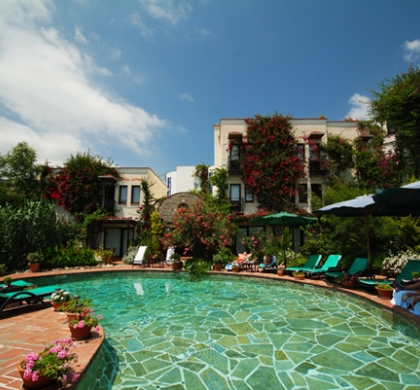Buy or gift a stand-alone digital subscription and get unlimited access to dozens of back issues for just £18.99 / $18.99 a year.
Please register at www.exacteditions.com/digital/cornucopia with your subscriber account number or contact subscriptions@cornucopia.net
Buy a digital subscription Go to the Digital EditionSome like their asparagus translucently white, others prefer crunchy and green. Whatever your choice, it takes lightness of touch to reveal the delicate flavour.
One morning in early May 1965, when our friend the botanist Martyn Rix was plant-hunting on Mount Ararat, in eastern Turkey, he crawled out of his tent, erected in the dark the night before, to find himself surrounded by succulent asparagus spears. It must have been a delightful surprise. “Young shoots,” he noted, “make an excellent breakfast combined with scrambled eggs.” As he went on to write years later in his book Vegetables, asparagus grows in abundance on such sandy volcanic hillsides.
It was a century earlier, after the Crimean War, that the artist Mary Adelaide Walker left for Turkey, where she spent 30 years painting portraits of Ottoman ladies and their children, and corresponding with newspapers and magazines abroad. For two years she taught drawing at a school for girls in Sultanahmet. Her memoirs, Sketches of Eastern Life and Scenery, published in 1886, are a mine of precious details about everyday life. In them Mrs Walker describes a gardener passing in front of her house selling his spring produce: “He holds beneath his arm a large bundle of green weeds, telling the public that ‘Birds do not alight upon it! Birds do not alight upon it!’ – so be it; but how does this ornithological fact interest us? The honest man is offering some asparagus, and the descriptive name of the plant is the Turkish suggestion of the feathery lightness of the green sprays.”
The Turkish word for asparagus, kuşkonmaz, does indeed translate as “birds do not alight”. The plant is so named because its black and red berries, irresistible to small birds, must be snatched by them in flight. Even the few grams of their body weight would be too much for the delicate foliage. Turks were not alone in making the ornithological connection: in 1667, Samuel Pepys referred to asparagus as “sparrow-grass”. grass”.
Part of the lily family, asparagus has many subspecies. When I was growing up, it was a much-loved decorative plant, and in my grandmother’s home its tulle-like foliage filled the corners like hazy clouds. But for eating, as well as for healing purposes, it is the spear-shaped shoots of Asparagus officinalis that we use. Asparagus is rich in vitamins B and C, and the shoots contain the amino acid asparagine, an effective diuretic. The Latin epithet ‘officinalis’ indicates that a plant was to be kept in stock by apothecaries for its recognised medicinal properties. In the case of asparagus, both the dried rhizome and the fresh shoots were used to aid the excretion of gallstones. In the manual Müntahab-ı Şifa, the 15th-century physician Celâüddin Hızır recommended asparagus, or helyun, as he called it, for its warming properties. It would soothe pain or discomfort related to the kidneys, he said, drawing wind and chills from the body and giving it strength….
In Turkey asparagus grows particularly well in Gönen, on the southern shore of the Sea of Marmara.
According to Celâüddin Hızır, asparagus should be eaten lightly boiled and dressed with olive oil (as a salad), or cooked with eggs (as a light dish), or prepared with meat (as a main dish) – which is exactly how, six hundred years later, we still enjoy it today.
In this article, Berrin Torlsan suggests simple ways to prepare asparagus with recipes for Steamed Asparagus, Cream of Asparagus Soup and Eggs with Asparagus, Tangy Asparagus and Asparagus Omlette.
Kevin Gould waxes lyrical over Château Musar, a legendary wine from the old Ottoman Levant, and salutes the brave new Turkish winemakers who stay true to their roots.
After the grim years of the early 1920s, Turkey experienced a brief period of euphoria. A new Republic was born, and new faces appeared in this land of hope, among them the brilliant but now forgotten photographer Othmar Pferschy (1898–1984), who turned up on the Orient Express in 1926 and stayed for forty years.
We were greatly saddened to learn of the death of one of the great archaeologists of the 20th century, James Mellaart, whose discovery of Çatalhüyük in the 1950s fundamentally altered our understanding of the past. In 2005, on his eightieth birthday, he talked to Christian Tyler. We publish the article here in full, and at the same time offer Jimmie’s family our utmost sympathy.
You embarked in Paris or Vienna and alighted at Sirkeci station, an Oriental fantasy in the shadow of the Topkapı Palace. This was the train that brought Istanbul into the heart of modern Europe: the fabled Orient Express.
Cappdocia, ‘Land of the Beautiful Horse’, was once famous for the fine steeds that bore its valiant knights. Few horses are left, but they can still transport you into another world. The photographer Jürgen Frank captures the eerie magic of the Anatolian plateau, Susan Wirth is exhilarated by five days in the saddle and David Barchard guides us through the epic landscape.








Cornucopia works in partnership with the digital publishing platform Exact Editions to offer individual and institutional subscribers unlimited access to a searchable archive of fascinating back issues and every newly published issue. The digital edition of Cornucopia is available cross-platform on web, iOS and Android and offers a comprehensive search function, allowing the title’s cultural content to be delved into at the touch of a button.
Digital Subscription: £18.99 / $18.99 (1 year)
Subscribe now